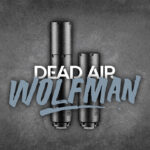
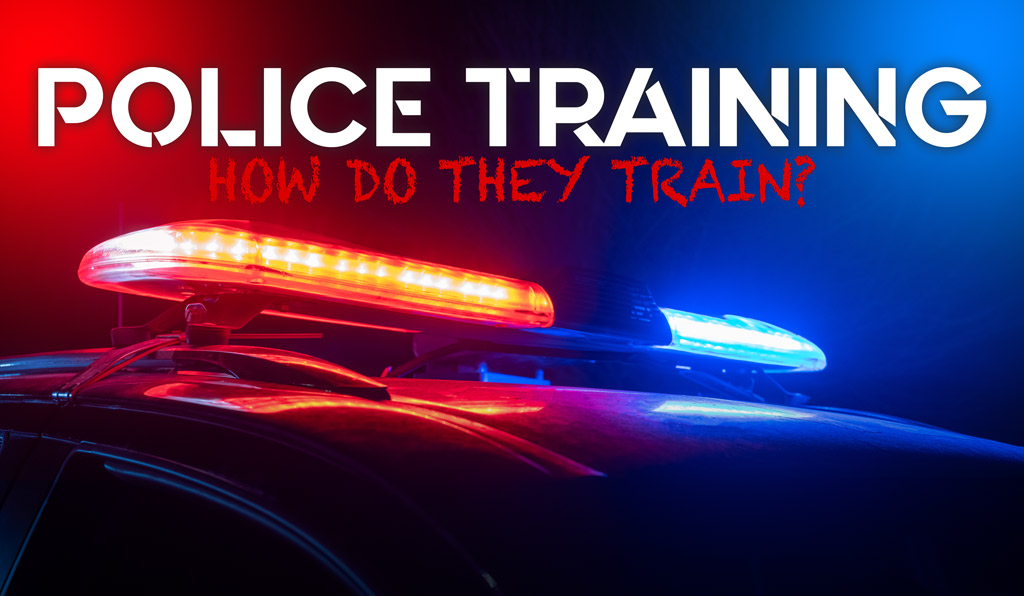
Have you ever wondered what officers go through in police firearm training? Perhaps you’re thinking about joining the force one day, or maybe you’re just curious about the firearm training requirements for police officers. Regardless of what brought you here, you’ll find what you need in this article.
To better understand police firearm training, we interviewed Mike Perez, a Metro DC officer and professional marksman. Officer Perez explains the importance of firearm safety and why having no prior experience isn’t necessarily bad. Beyond demonstrating safe firearm use, Perez explains that officers must pass a series of competencies with different firearms in multiple positions and at various distances.
While not all police firearm training is identical, Mike Perez offers a unique glimpse into the handgun and rifle requirements for a duty police officer.
Overview
We’ll go over the various components of firearm training and uncover a few insider tips.
Some of the most pressing questions we’ll answer include: how long is police firearm training? Do you need to know how to operate a firearm before entering police firearm training? What will you be required to do to pass law enforcement firearm training?
Here’s what you should know about police firearm training:
- Length of the firearm training portion
- Preparation and expectations for law enforcement firearm training
- Requirements to pass PD firearm training (distance and positions)
Below, we’ll hear what Officer Perez says about each aspect of police firearm training.
Police Firearm Training Time Frame
How long does firearm training last? According to Officer Perez, dedicated firearms training lasts about two weeks. However, not all academies are the same, and while this is the initial training, many officers must continue regular training with their departments.
“[In some cases] you’ll go from zero firearms experience to needing to qualify within two weeks.” – Officer Mike Perez on expectations.
While this may sound unachievable, Perez let us know what you can expect.
Preparation & Expectations: Police Handgun & Rifle Training
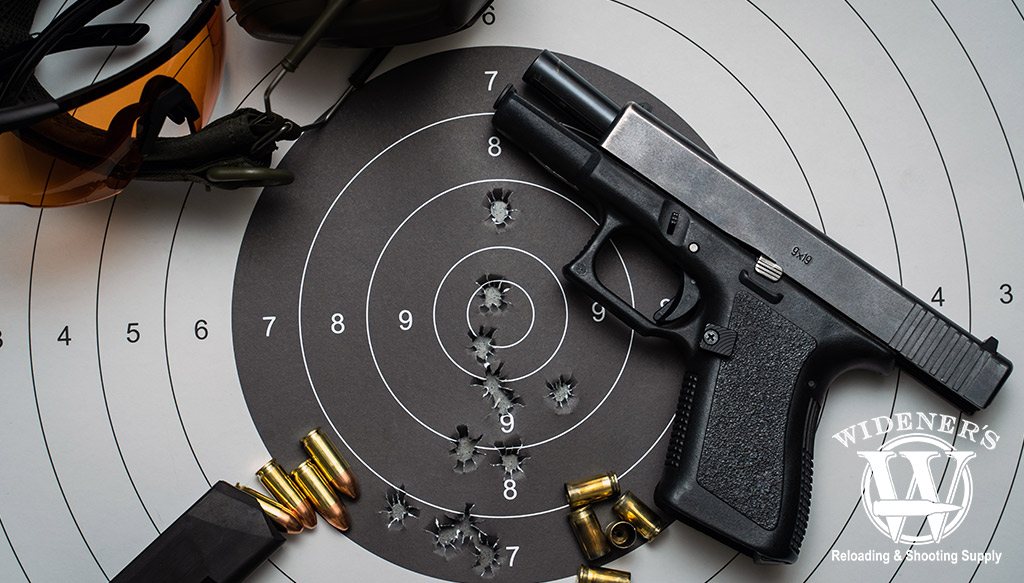
What to expect? Your skills will be tested, along with your ability to use handguns and rifles.
Understandably, those new to police firearm training can be nervous. Officer Mike Perez, however, states the programs are designed for people with little to no firearm training.
Most importantly, officers must learn how to handle their firearms safely in a wide array of situations.
Later on, we’ll talk about some of the specific requirements during training.
Regarding instructors, Officer Perez states that there’s a chance you’ll have a civilian-trained instructor helping with the class. Again, Perez stresses that the important part of the training is teaching safety.
Officer Perez also points out that, sometimes, having minimal familiarity with a firearm is an advantage, as you haven’t had time to develop bad habits. He states that instructors don’t mind green recruits because they don’t have to spend as much time correcting poor behavior.
Know The Requirements
The main requirements for police firearm training revolve around handguns and rifles. Officer Perez notes that many departments have moved away from shotguns in recent years but that they may make a comeback. He says that, usually, you’ll be required to qualify with whatever firearms you’ll be carrying on duty.
Officer Perez says that, in some cases, law enforcement officers are allowed to bring their own firearms. If the gun meets the department parameters and the officer can qualify with it, then the officer can carry it on duty. Officer Perez stresses that each department will have its own rules and requirements.
The two main qualification requirements are:
- Pistol requirement
- Rifle requirements
Pistol Requirements: Passing Police Firearm Training
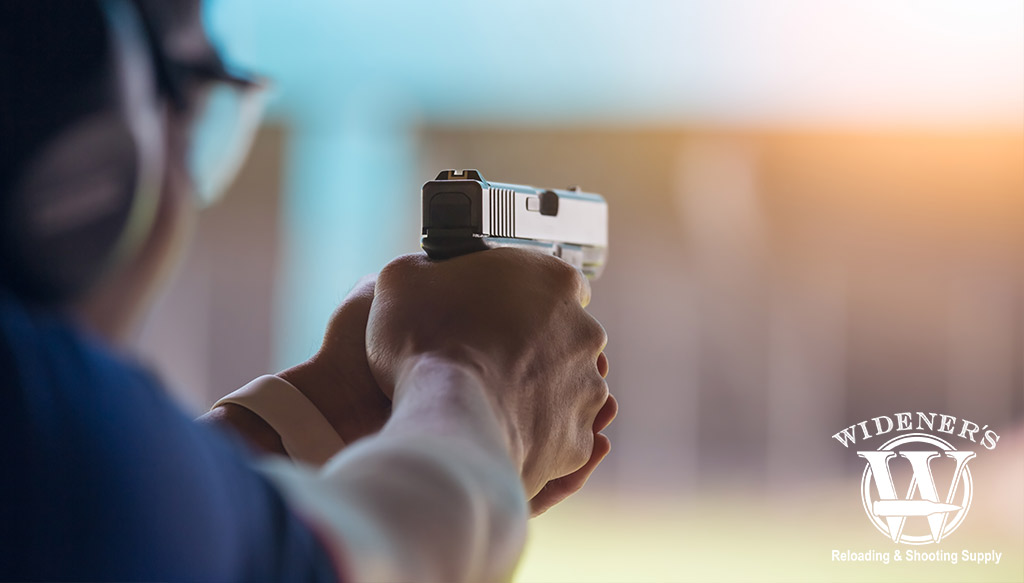
Police handgun proficiency requires 43/50 shots on target from a distance of 25 yards.
Here are some of the pistol requirements Perez says are required in his department.
The officer in training will stand at 25 yards. The trainee will fire ~50 rounds from various positions at this distance, and must place 43/50 shots on the target.
The officer must shoot from a standing position, demonstrating a safe and effective draw from the hip. They will also fire several rounds from a kneeling position and around a barricade.
What’s the target? Officer Perez states that he usually sees the B27 Target. Shots outside the body are a miss, and the recruit is required to place several headshots.
The officer will also be required to qualify with any sight they may use in the field, including red dots and irons.
Rifle Requirements: Passing Police Firearm Training
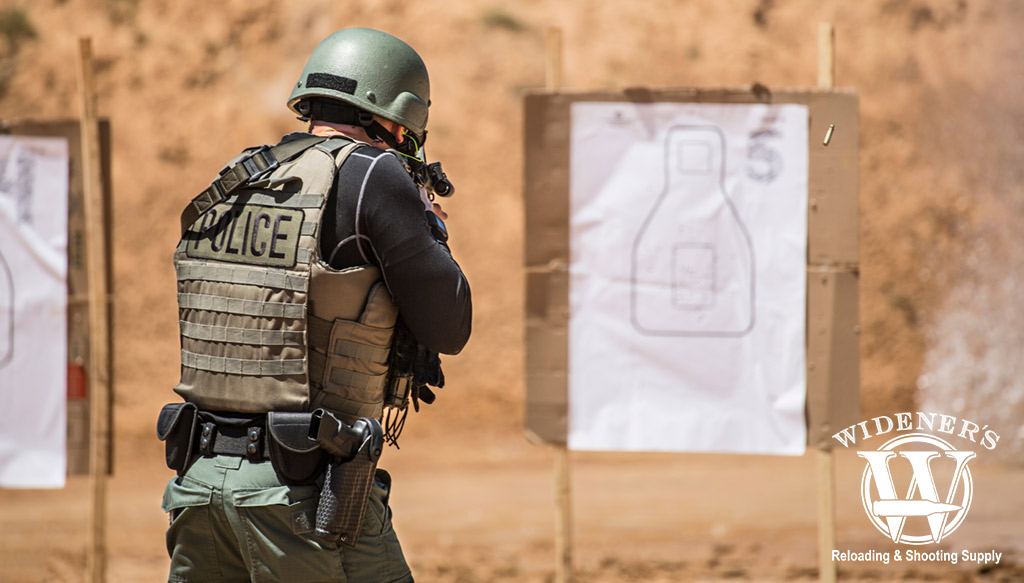
Police rifle proficiency requires maximum shots on target from a distance of 50 yards.
To pass police firearm training with rifles, the parameters are similar but at greater distances.
Officers are required to pass at 50 yards with the rifle. They must follow a similar protocol to pistol qualifications, firing rounds while standing, kneeling, and from the prone position.
Officer Perez also states that those attempting to qualify must often test in the outfits they will wear on duty. This means that sometimes, the officer will need to shoot while wearing a gas mask, helmet, and extra gear.
What Happens If You Fail?
In most cases, failing police firearms training once won’t lock you into a permanent desk job. Most departments will allow you to receive remedial training to improve your skills before giving you another opportunity to qualify. The timeline for requalification varies by department, and can be spaced out between several weeks, or months depending on the precinct. Should you fail to qualify after several attempts, you run the risk of suspension from the force and the forfeiture of your badge and police powers. From there, it’s up to the department to decide whether you’ll receive additional remedial training or be reassigned.
Words of Wisdom: An Officer On Police Firearms Training
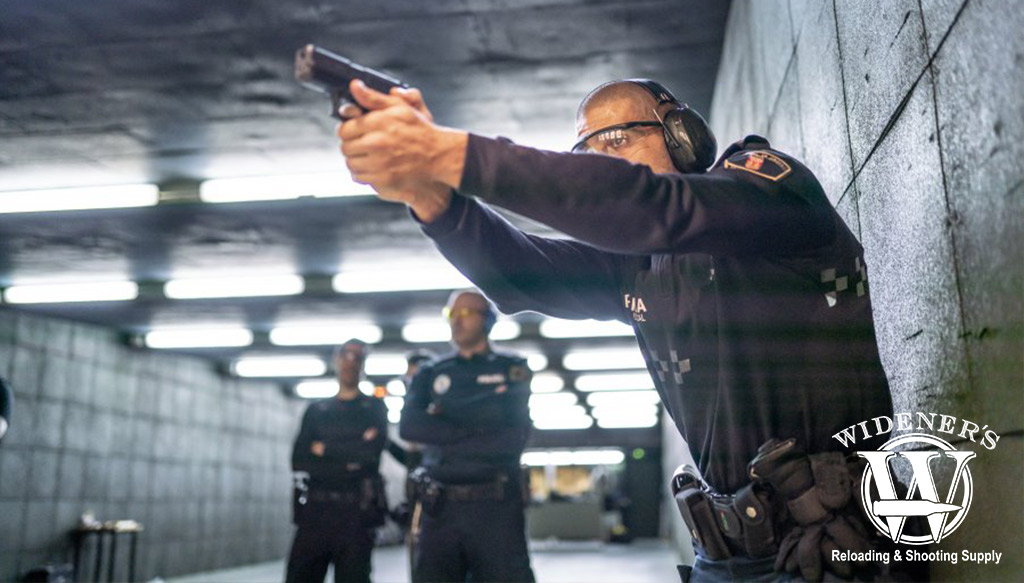
Police training academies will prepare you for the field, but you’ll need to know the rules of firearm safety.
According to Officer Perez, the best way to prepare for police firearm training is to familiarize yourself with a safe and consistent grip and the most common police guns and equipment (red dots, etc.). Most importantly, remember: safety first.
When asked what inexperienced recruits should do, Officer Perez says:
“If you don’t have any shooting experience, focus on the rules of firearm safety.” – Officer Mike Perez
He emphasizes that, above all, training academies want their police officers to prioritize safety.
About Officer Mike Perez: Officer Mike Perez is a Metro DC police officer with over eight years of experience. In addition to his roles in the department’s Violent Crime Suppression Unit, he is a professional marksman who competes in competitions nationwide.
Learn more about the guns police officers use and the ammo they carry in our ongoing series.


